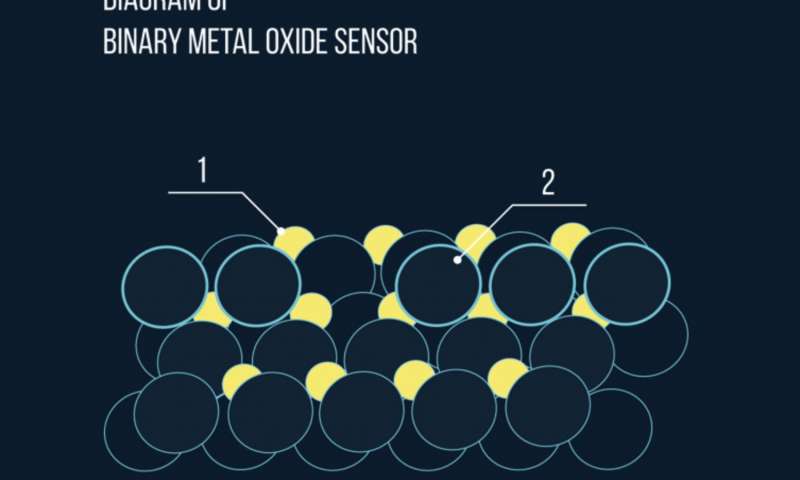Russian researchers have developed a new sensor powered by nanoparticles. Scientists say the new sensor offers groundbreaking sensitivity to environmental pollutants — and even terrorists threats.
The advantage of using a binary metal oxide sensor is that one of the components provides a high density of conductive electrons, and the second component is a strong catalyst. To effectively detect and analyse a gas an electron donor and a substance “accommodating” the reaction are required. This allows the sensors to discriminate between very low concentrations of analytes, thereby detecting and characterizing the gas.
A schematic representation of a binary sensor based on two metal oxides, with the nanoparticles of the catalytically active component (1) in yellow and the nanoparticles of the electron donor component (2) represented by the unshaded circles.
A mixed system of that kind has the two necessary components for effective gas detection, viz., an electron donor and a substance “accommodating” the reaction. An additional factor contributing to faster sensor response is the formation of chemisorption centers, i.e., the chemically active spots on the nanocrystals that facilitate gas molecule adsorption.
“We are planning further research into the possibilities for sensor design presented by the multicomponent metal oxide nanocomposites incorporating nanofibers. The development of new effective sensor compositions will be based on a reasonably balanced approach involving both the experimental tests and the advancement of our theoretical understanding of the sensing mechanisms,” comments Prof. Leonid Trakhtenberg of the Department of Molecular and Chemical Physics at MIPT.
A rather promising approach to the development of new gas detection systems is the use of “core–shell type” composite metal oxide nanofibers, where the “core” and the “shell” are composed of two different oxides.
Agencies/Canadajournal
 Canada Journal – News of the World Articles and videos to bring you the biggest Canadian news stories from across the country every day
Canada Journal – News of the World Articles and videos to bring you the biggest Canadian news stories from across the country every day




